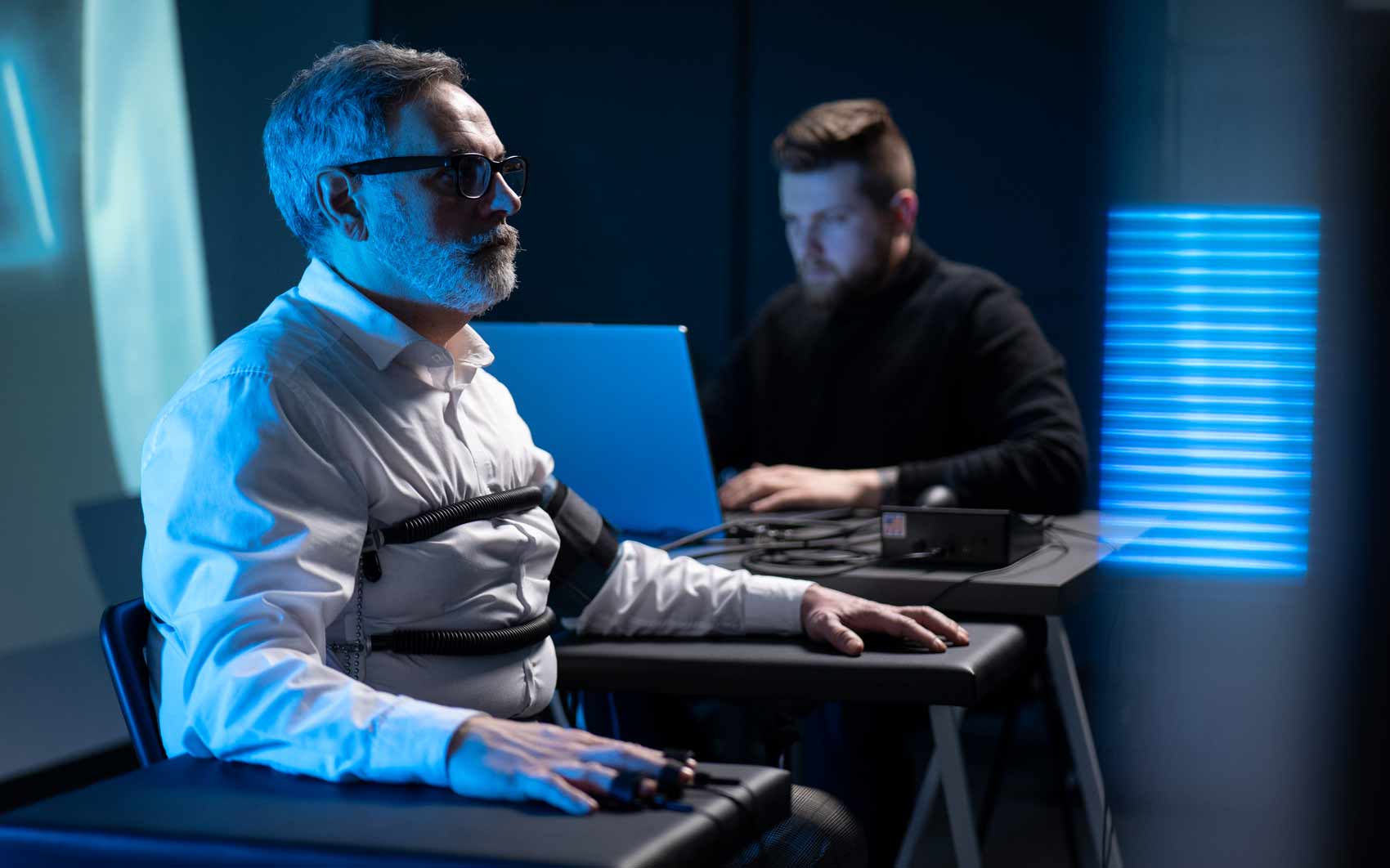Introduction: The Fascination with Detecting Deceit
In a world where truth and deception often blur, the idea of a machine capable of distinguishing lies from honesty has captivated the human imagination for over a century. The lie detector test, formally known as the polygraph, promises to reveal hidden truths by measuring physiological responses believed to correlate with deceptive behavior. From police investigations and pre-employment screenings to reality television and courtroom dramas, the lie detector has become both a tool of justice and a cultural icon. But how accurate is it? What does it actually measure? And more importantly, can it really detect a lie? This article delves deep into the science, application, controversies, and evolving future of the lie detector test.
Understanding the Polygraph: What It Measures and How It Works
At its core, a polygraph does not detect lies directly. Instead, it records and analyzes physiological changes in the body—such as heart rate, blood pressure, respiration, and skin conductivity—while a person answers a series of questions. The underlying assumption is that deceptive answers trigger stress responses, which in turn cause noticeable deviations in these physiological markers.
During a typical polygraph examination, the subject is connected to sensors that measure these responses. The examiner then asks a series of questions, typically divided into three categories: irrelevant (baseline questions, such as “Is your name John?”), control (questions designed to provoke a response even from innocent individuals, such as “Have you ever lied to get out of trouble?”), and relevant (questions directly related to the matter under investigation, like “Did you steal the missing money?”).
The examiner compares the physiological responses across these types of questions. A significantly stronger response to a relevant question than to a control one might be interpreted as a sign of deception. However, this interpretation is highly subjective and often depends on the examiner’s training, experience, and biases.
A Brief History of the Lie Detector
The concept of detecting lies through physiological responses dates back to ancient times, when people would use rudimentary methods to test honesty—such as having suspects hold hot irons or chew dry rice to assess guilt based on their physical reactions. The modern polygraph, however, has its roots in early 20th-century psychology and physiology.
In 1921, John Augustus Larson, a medical student and police officer, created the first practical lie detector by combining earlier devices that measured blood pressure and respiration. His machine was used in criminal investigations and became the prototype for modern polygraphs. Later improvements by Leonard Keeler, often credited as the co-inventor, added galvanic skin response measurement, increasing the device’s sensitivity.
By the mid-20th century, polygraphs gained widespread use in law enforcement and government agencies. During the Cold War, the U.S. government even used them to screen federal employees for potential espionage threats. Despite these uses, the scientific community has long remained skeptical of the polygraph’s reliability.
The Science of Deception: Can Physiological Signals Truly Reveal Lies?
A central issue in polygraphy is the assumption that lying causes measurable stress. While it’s true that deception can trigger stress responses, not all stress indicates lying, and not all lies cause stress. Nervousness, fear, embarrassment, or even anger—emotions commonly felt during a high-stakes interrogation—can cause the same physiological reactions as lying.
Furthermore, individual differences complicate interpretation. Some people may remain calm while lying (such as sociopaths or trained spies), while others may exhibit stress even when telling the truth, especially under pressure. This variability makes it difficult to draw a clear line between truth and falsehood based solely on bodily signals.
Numerous scientific studies and reviews have examined the polygraph’s accuracy. A 2003 report by the National Research Council (NRC) concluded that while the polygraph is more accurate than chance, its reliability is far from perfect. Estimates of accuracy vary widely, with some studies suggesting a success rate of around 70% to 90%, depending on methodology, examiner skill, and test type.
Today, most U.S. courts do not accept polygraph results as admissible evidence, citing concerns over accuracy and potential for prejudice. However, some states allow them under specific circumstances, such as if both parties agree to admit the results before trial. In contrast, other countries, like Japan and Israel, use polygraphs more frequently in investigations, though even there, results are not always definitive.
Ethical concerns also loom large. Critics argue that relying on polygraphs can lead to false confessions, job discrimination, and violations of privacy. For example, the Employee Polygraph Protection Act of 1988 prohibits most private employers in the U.S. from using lie detectors during hiring processes, though exceptions exist for security firms and government agencies.
Real-World Applications: Beyond the Police Station
Despite controversy, polygraphs continue to be used in various sectors. Law enforcement remains the most prominent field, where lie detectors serve as tools for criminal investigations. They can help narrow suspects, elicit confessions, or encourage cooperation—but rarely serve as standalone evidence.
In the corporate world, certain sensitive industries—such as defense contractors and intelligence agencies—use polygraph tests as part of security clearance procedures. These tests may focus not just on criminal behavior but also on loyalty, foreign contacts, or potential blackmail risks.
Polygraphs also appear in popular media, from reality TV shows to daytime talk shows. Though often dramatized, these portrayals shape public perception and feed into the mythos of the lie detector as a nearly infallible truth machine. This has led some individuals to seek polygraph tests voluntarily—for example, to prove fidelity in a relationship or clear their name in a dispute.
Emerging Technologies and the Future of Lie Detection
Given the limitations of traditional polygraphy, researchers are exploring more advanced methods of lie detection. Some of these include:
- Functional Magnetic Resonance Imaging (fMRI): By scanning the brain for regions that activate during deception, fMRI promises a more direct look at the cognitive processes involved in lying. However, the technology is expensive, complex, and still in the experimental phase.
- Voice Stress Analysis (VSA): This technique analyzes subtle changes in voice pitch and frequency to detect stress. While less invasive than a polygraph, its reliability is debated.
- Artificial Intelligence (AI) and Machine Learning: These tools are being developed to analyze a broader range of behavioral cues—from microexpressions to speech patterns—to improve accuracy and reduce bias.
- Wearable Sensors: Future lie detection may involve discreet, continuous monitoring of physiological signals using wearable devices, potentially creating a more dynamic, real-time model of truth-telling behavior.
While these technologies offer exciting possibilities, they also raise new ethical and legal questions about consent, surveillance, and the right to privacy.
Conclusion: A Complex Tool in a Complex World
The lie detector test remains one of the most controversial tools in the realm of truth-seeking. On the surface, it offers a tantalizing promise—a scientific method for separating lies from truth. But beneath that promise lies a complex web of assumptions, variability, and human interpretation. Its usefulness is undeniable in certain contexts, such as guiding investigations or prompting admissions. Yet, its flaws prevent it from being the infallible truth-teller that many hope for.
As technology continues to evolve, the search for a reliable method of lie detection presses on. Whether through brain imaging, AI, or behavioral science, the pursuit reflects a deep-seated human desire: to uncover truth in a world full of deception. Until then, the polygraph remains a tool—valuable, flawed, and forever at the crossroads of science and belief.

